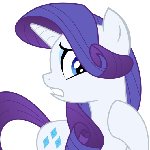Hi guys, Im having some problems with melodies and stuff.
I have a basic understanding of music theory and I understand how to make certain sounds and stuff but for the life of me, I can't figure out how the hell I make melodies for leads and stuff.
Thanks for helpin/takin the time to read.
Need help with melodies
6 posts
• Page 1 of 1
Re: Need help with melodies
have your chord progression. Use only notes that are in the chord when you hit the beats, but in between you could put in filler notes for more flow in the melody (make sure you stay in your key).
Arpeggiating chords can sometimes get the brain juices flowing for how you can set up your rythm and notes.
Sometimes emulating a certain style you're going after can lend some inspiration.
Arpeggiating chords can sometimes get the brain juices flowing for how you can set up your rythm and notes.
Sometimes emulating a certain style you're going after can lend some inspiration.

-

Captain Ironhelm - Posts: 661
- Joined: 22 Apr 2012 22:09
Re: Need help with melodies
I just plunk notes down on piano roll and mess around with them until they sound good, lol  you can come up with some pretty awesome melodies like that.
you can come up with some pretty awesome melodies like that.
-

itroitnyah - Posts: 2482
- Joined: 02 Mar 2012 20:27
- OS: Windows 7
- Primary: FL Studio 11
- Cutie Mark: Blank flank
Re: Need help with melodies
Alright, also, I still dont understand chord progression a lot though.
-

BeaM - Posts: 68
- Joined: 19 Jan 2012 17:57
Re: Need help with melodies
Basically, chord progression is a kind of structure that holds your whole piece together. I'll explain with an example. Say you are in the key of C major (for simplicity's sake). An example chord progression would be 1, 4, 5, 6 (or I, IV, V, VI). The numbers correspond to the note you should be playing relative to the root note (C, in this case). You move through your chord progression every bar, let's say, so your first bar uses note 1 (C). On the second bar, you play note 4 (F) and note 5 (G) on the next one and note 6 (A) on the next. Now, a bassline or some pads or something may just play the note that the chord progression is telling it to at any one time. But a melody will be playing notes that are harmonies to the chord (for example, if the chord is C the melody will be playing either a C, E or an G at any one time, switiching between the three). Of course, you don't have to stick to your chord progression all the time, but it helps.
I hope that cleared things up a bit, sorry if I'm not very good at explaining things.
I hope that cleared things up a bit, sorry if I'm not very good at explaining things.
-

Omegastick - Posts: 40
- Joined: 10 Nov 2012 14:58
Re: Need help with melodies
Chord progression would be the rhythm of the song. Don't think of rhythm as "left to right" but more "side to side". You know? Like, I can take a simple kick and just play the kick 4 times per measure, and that's rhythm. It's like 1-2-3-4, 1-2-3-4, 1-2-3-4. It just happens that you're going to put some pattern into the rhythm.BeaM wrote:Alright, also, I still dont understand chord progression a lot though.
Now, if you'll notice, I didn't say that you're going to be putting melody into the rhythm. Rhythm and melody are two separate things. Rhythm is, by definition, the systematic arrangement of musical sounds, principally according to duration and periodic stress. Melody is, again by definition, a sequence of single notes that is musically satisfying. Of course, melody isn't restricted to just single notes. You can layer notes, of course. But then the name changes from melody, to harmony. Harmony is, essentially, two melodies placed on top of each other. Harmony sounds really amazing and awesome, but is of course, harder to make. Anyways...
The definition of rhythm that I gave above would imply that you can't use different length notes or chords. If you're going to use a 3/4 measure long chord for the first chord of a progression, you have to stay with 3/4 measure long chords. That is, of course, wrong, as you'll find in many songs. It really means that rhythm would be a pattern of sounds. It's like making a regular pattern. Square, square, circle, triangle, square, square, circle, triangle. 1 measure long note, 1 measure long note, 1/2 measure long note, 1 1/2 measure long note. You get the idea. A chord progression is just a series of chord changes that "aim for a goal".
As for incorporating melody into a chord progression, that's simple. You could stick to the notes of the chord at that point in the progression, and you'll never get dissonance in your music. It does, however, sound dry. To get a more filling melody, place down notes in the pattern that you want in any note of the scale, and then listen to it. Find the notes that are dissonant or have other problems with them, and change them. A lot of melody creation is trial and error. Don't expect that just because all the notes in both the melody and chord progression are within the same scale that it'll all be in tune. They won't be "dissonant", but their pitches will clash. So go and try it out for yourself.
-

itroitnyah - Posts: 2482
- Joined: 02 Mar 2012 20:27
- OS: Windows 7
- Primary: FL Studio 11
- Cutie Mark: Blank flank
6 posts
• Page 1 of 1
Who is online
Users browsing this forum: No registered users and 7 guests


